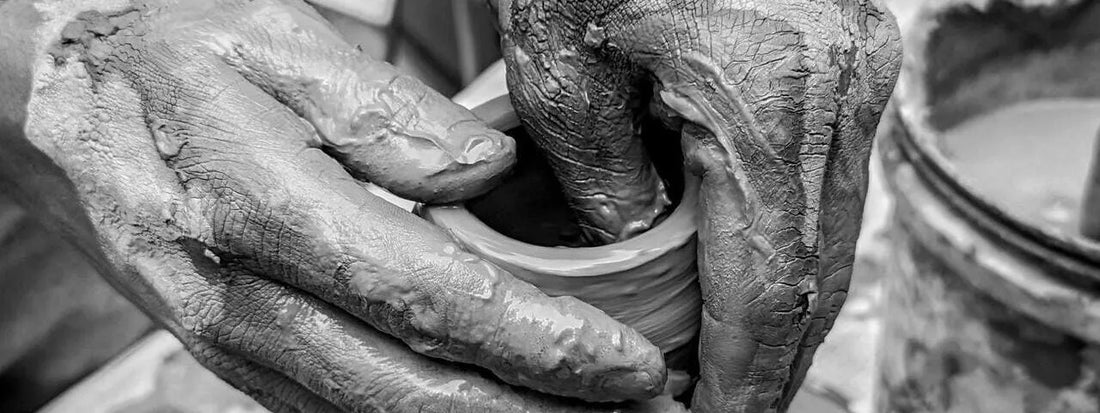
Sustainability in ceramics: environmentally friendly materials and manufacturing processes
Share
Reading time: 6 minutes
Ceramics is not only an expression of artistic creativity, but also an art form that is increasingly focused on sustainability. In a world that is increasingly focused on environmental protection and sustainable living, ceramics production also plays an important role. In this article, we look at how environmentally friendly materials and manufacturing processes are changing the ceramics industry and how you as a potter or consumer can contribute to this.
Environmentally friendly materials in ceramics
The choice of materials is a crucial factor for sustainability in ceramic production. Clay is traditionally used, but there are increasingly alternatives that are more environmentally friendly.
Recycled clay:
Using recycled clay reduces the mining of new raw materials and minimizes waste. Many ceramicists collect and recycle their clay to use it again.
Natural dyes:
Instead of chemical glazes, natural dyes can be used that have less harmful effects on the environment. For example, plant extracts and mineral pigments are used to create beautiful and sustainable colors.
Biodegradable packaging:
Packaging also plays a role. Biodegradable materials such as paper and cardboard are increasingly replacing plastic packaging to reduce environmental impact.
Sustainable manufacturing processes
In addition to the materials, the manufacturing processes also contribute significantly to sustainability. Here are some of the most important methods used in the ceramics industry.
Energy efficient kilns:
Using modern, energy-efficient kilns can significantly reduce energy consumption. Some kilns use renewable energy sources such as solar or wind power, further reducing the carbon footprint.
Water saving:
Water is an essential element in ceramic production. By implementing water recovery systems, workshops can minimize water consumption. Reusing and filtering water also contribute to more sustainable practices.
Local production:
Supporting local manufacturers and using regional materials reduces transport costs and therefore the associated emissions. This also strengthens the local economy and promotes traditional craftsmanship.
To learn more about traditional craftsmanship, check out our article on DIY ceramic making .
Sustainability and innovation
Innovative techniques and creative approaches play a crucial role in the advancement of sustainable practices in ceramics. Research and development of new materials and processes help to further improve environmental friendliness. Collaborations between artists, scientists and industry can open up new paths and transform the industry sustainably.
The opinion of Pottery Art
At Pottery Art we place great importance on sustainability. We are proud to promote and support environmentally friendly materials and processes. Our products are not only aesthetically pleasing but also manufactured in an environmentally conscious manner. Discover our sustainable ceramic collection and contribute to a greener future.
Conclusion
Sustainability in ceramics is a significant issue, promoted by choosing eco-friendly materials and efficient manufacturing processes. By using recycled materials, energy efficient technologies and local production, the ceramics industry can significantly reduce its environmental footprint. At Pottery Art, we strive to support and promote these sustainable practices to create a better future for generations to come.
